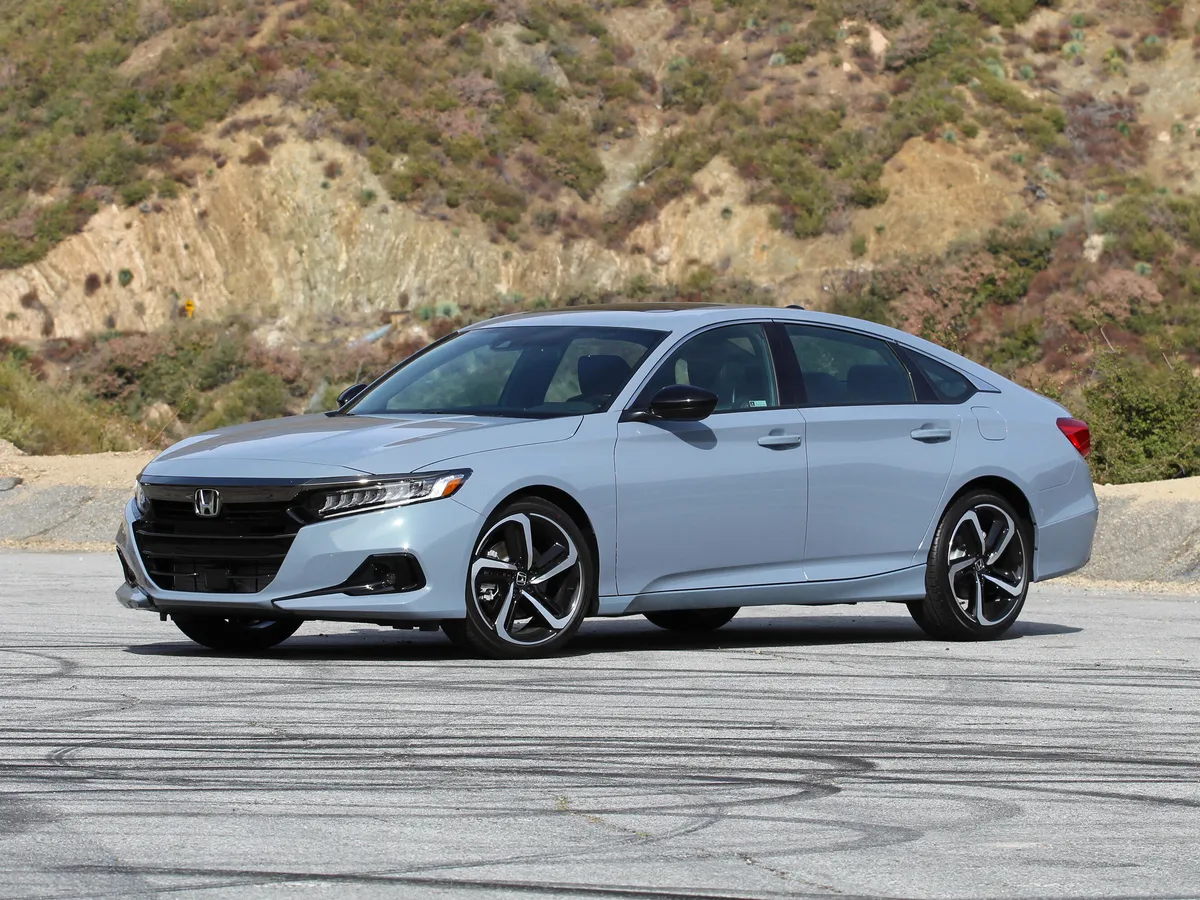When purchasing a used vehicle, understanding theft insurance benefits can significantly impact your overall ownership costs and peace of mind.
Theft insurance benefits vary dramatically across different makes and models, often depending on factors such as the vehicle’s theft rate statistics, security features, market value, and manufacturer partnerships with insurance companies.
Some vehicles come equipped with advanced anti-theft systems, immobilizers, and tracking technologies that make them less attractive to thieves and more favorable to insurers, resulting in lower premiums and additional coverage benefits.
Conversely, certain vehicles are frequently targeted by criminals due to their high resale value, ease of theft, or demand for parts in the black market. These vehicles often face higher insurance premiums and may not qualify for specialized theft protection benefits.
The distinction between vehicles that qualify for theft insurance benefits and those that don’t can mean hundreds or even thousands of dollars in annual insurance costs.
This comprehensive guide examines ten popular used vehicles, categorizing them into two distinct groups: five that typically come with favorable theft insurance benefits and five that generally don’t qualify for such advantages.
Understanding these differences will help you make an informed decision when shopping for your next used car, ensuring you consider not just the purchase price but also the long-term insurance implications that could significantly affect your budget.
5 Cars That Come With Theft Insurance Benefits
These strategically chosen used vehicles come equipped with comprehensive anti-theft systems that automatically qualify owners for substantial insurance discounts and enhanced theft coverage benefits.
Their sophisticated security features include factory-installed alarm systems, GPS tracking devices, engine immobilizers, and advanced keyless entry systems that insurance companies recognize as highly effective theft deterrents.
You can earn an anti-theft device discount of up to 23% with GEICO, making these vehicles financially advantageous choices for security-conscious buyers.
The integrated security technologies in these vehicles not only protect against theft but also ensure comprehensive insurance coverage when unfortunate incidents occur. If your car or parts of your car are stolen, will car insurance cover theft? The answer is yes, if you have comprehensive coverage, and these vehicles typically qualify for the most favorable comprehensive coverage terms.
Many insurance companies offer discounts, usually around 10% to 15% for vehicles equipped with anti-theft technologies like alarms or tracking devices, with premium models receiving even higher discount percentages through their advanced security implementations.
1. Honda Accord (2018-2022)
The Honda Accord stands as one of the most insurance-friendly vehicles in the used car market, particularly regarding theft coverage benefits. Insurance companies consistently rate the Accord favorably due to its comprehensive factory-installed security features and relatively low theft rates compared to other midsize sedans.
The vehicle comes standard with Honda’s advanced immobilizer system, which prevents the engine from starting without the properly programmed key fob, making hot-wiring virtually impossible.
Modern Accord models feature Honda Sensing as standard equipment, which includes not only safety features but also security-enhancing technologies.
The integrated alarm system connects to the vehicle’s central computer, triggering multiple alerts including horn honking, light flashing, and automatic door locking when unauthorized entry is detected.
The system’s sophistication extends to motion sensors that can detect movement inside the vehicle even when doors remain locked. Insurance companies appreciate the Accord’s theft statistics, which show significantly lower rates compared to vehicles in similar categories.
This favorable data translates directly into theft insurance benefits, including reduced deductibles for comprehensive coverage, lower premium rates for anti-theft protection, and eligibility for specialized coverage options. Many insurers offer additional discounts ranging from 5% to 15% on comprehensive coverage specifically for Accord owners.
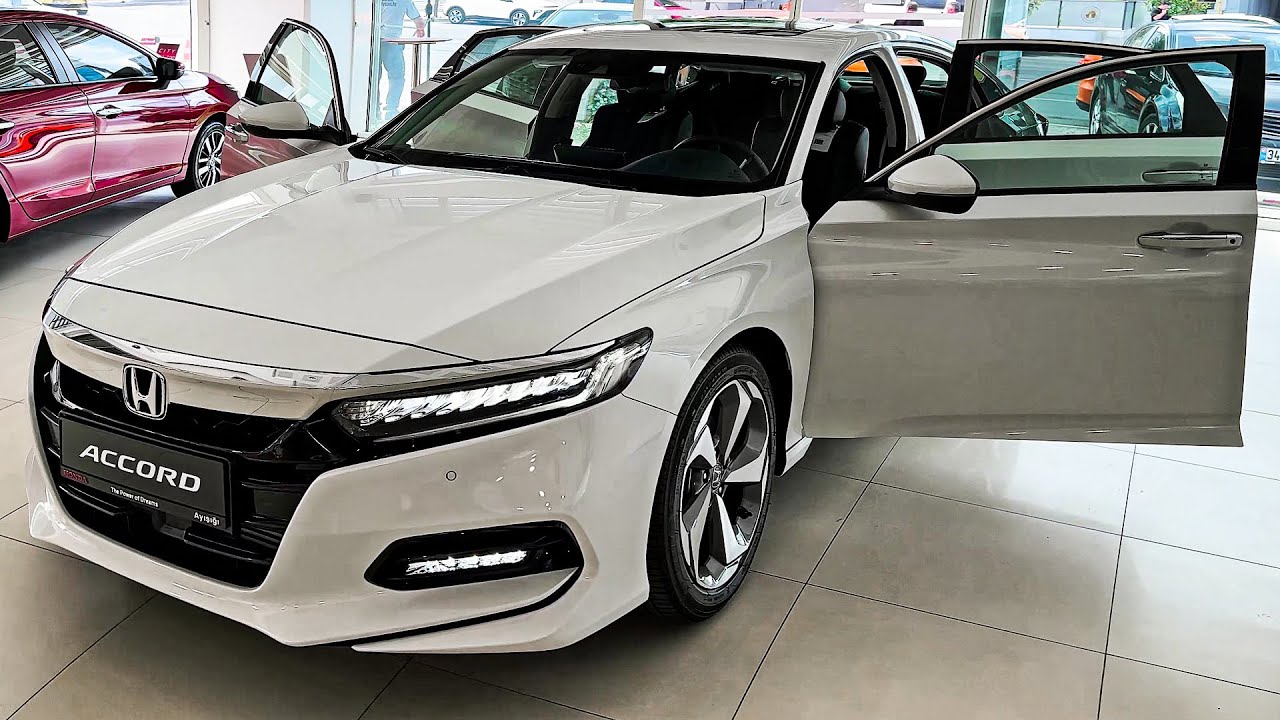
The vehicle’s parts market also contributes to its favorable insurance status. Unlike vehicles with expensive or rare components, Accord parts are widely available through legitimate channels, reducing the incentive for theft-to-order operations.
The abundance of genuine parts in the legitimate market means thieves have less financial motivation to target these vehicles specifically for component harvesting. Honda’s partnership with major insurance providers has resulted in certified anti-theft programs that recognize the Accord’s security features.
These programs often include benefits such as guaranteed replacement value coverage, expedited claims processing, and access to Honda-certified repair facilities.
Some insurance companies even offer total loss protection that covers the gap between the vehicle’s actual cash value and any remaining loan balance.
The Accord’s reliability reputation also influences insurance benefits. Vehicles known for mechanical reliability are less likely to be abandoned after theft, reducing recovery costs for insurers.
This reliability factor contributes to more comprehensive theft coverage options and better terms for policy holders. Additionally, the Accord benefits from Honda’s proactive approach to security updates.
The manufacturer regularly issues software updates for the vehicle’s security systems, and many insurance companies recognize this ongoing commitment to theft prevention by maintaining favorable policy terms throughout the vehicle’s ownership period.
2. Toyota Camry (2017-2021)
The Toyota Camry has earned exceptional recognition in the insurance industry for its outstanding theft prevention credentials and comprehensive security features.
Insurance companies consistently rank the Camry among their preferred vehicles for theft coverage due to its remarkably low theft rate statistics and Toyota’s commitment to advanced security technology.
The vehicle’s theft insurance benefits stem from multiple factors that make it both less attractive to thieves and more recoverable when theft does occur.
Toyota’s Smart Key system represents one of the most sophisticated anti-theft technologies available in the midsize sedan market. This system employs rolling code technology that changes the access code every time the key is used, making electronic theft attempts virtually impossible.
The Smart Key communicates with the vehicle through encrypted signals that cannot be easily duplicated or bypassed, providing a level of security that insurance companies highly value.
The Camry’s integrated security system extends beyond basic alarm functionality to include advanced features such as intrusion detection, tilt sensing, and glass breakage detection.
These systems work together to create multiple layers of protection that activate different response protocols depending on the type of unauthorized access attempted.
Insurance companies recognize this comprehensive approach by offering enhanced theft coverage options and reduced deductibles for comprehensive claims.
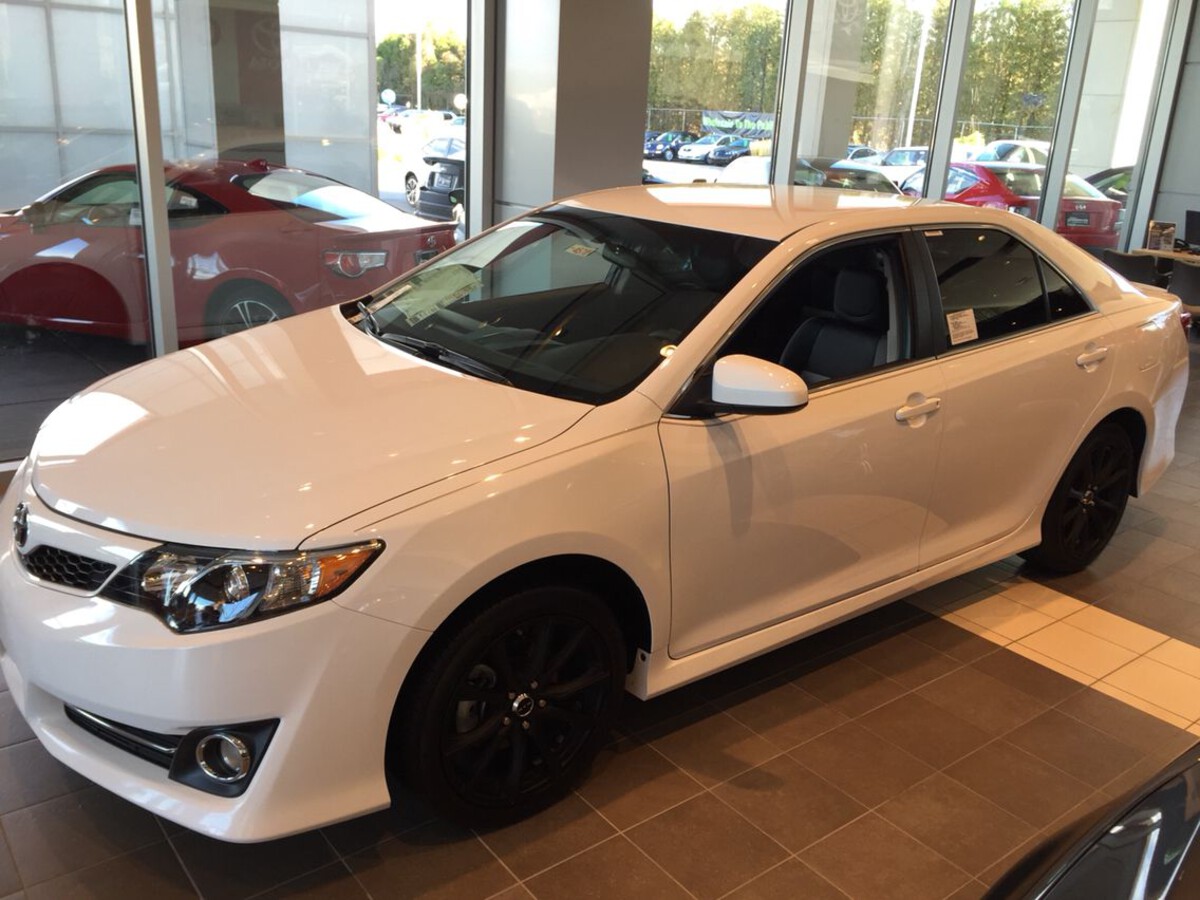
Statistical data consistently shows the Camry maintaining one of the lowest theft rates in its class, with many model years recording theft rates below 0.5 per 1,000 vehicles.
This exceptional performance translates directly into insurance benefits, including preferential premium rates, extended coverage options, and eligibility for specialized anti-theft programs. Many insurers offer automatic discounts for Camry owners, recognizing the reduced risk profile associated with the vehicle.
Toyota’s collaboration with law enforcement agencies has resulted in advanced recovery systems that significantly improve the chances of vehicle recovery after theft.
The Camry’s onboard diagnostic systems can provide detailed information about the vehicle’s location and condition, making recovery efforts more efficient and successful. Insurance companies factor this high recovery rate into their coverage calculations, often resulting in better terms for policy holders.
The vehicle’s parts security also contributes to its favorable insurance status. Toyota has implemented advanced part serialization and tracking systems that make it difficult for stolen Camry components to enter the legitimate parts market. This anti-fencing approach reduces the profitability of Camry theft for parts, further lowering the vehicle’s theft risk profile.
Many insurance companies offer specialized programs for Toyota vehicles that include benefits such as original equipment manufacturer (OEM) parts guarantees, certified repair facility networks, and expedited claims processing.
These programs recognize Toyota’s commitment to security and reliability, providing additional value to Camry owners beyond basic theft coverage. The Camry also benefits from Toyota’s ongoing security research and development.
The manufacturer continuously improves its anti-theft technologies and regularly updates existing systems, ensuring that even older model years maintain effective theft protection. Insurance companies recognize this commitment by maintaining favorable policy terms throughout the vehicle’s ownership lifecycle.
3. Subaru Outback (2019-2023)
The Subaru Outback has established itself as a premium choice for theft insurance benefits, largely due to Subaru’s innovative approach to vehicle security and the model’s unique position in the automotive market.
Insurance companies consistently rate the Outback favorably for theft coverage because of its sophisticated security systems, low theft statistics, and Subaru’s comprehensive anti-theft partnerships with major insurers.
Subaru’s STARLINK security system represents one of the most advanced vehicle protection platforms available in the crossover SUV segment. This connected vehicle technology provides real-time monitoring, automatic crash notification, and advanced theft detection capabilities that insurance companies highly value.
The system can track vehicle location, monitor unauthorized movement, and provide detailed reports to both owners and insurance companies in the event of theft.
The Outback’s immobilizer system uses advanced encryption technology that makes unauthorized starting virtually impossible. Unlike simpler immobilizer systems, Subaru’s technology employs multiple authentication layers that must be satisfied before the engine will start.
This sophisticated approach has resulted in extremely low theft rates for the Outback, with many insurance companies reporting theft rates below 0.3 per 1,000 vehicles for recent model years.
Insurance companies appreciate the Outback’s demographic profile, which typically attracts responsible, safety-conscious owners who are less likely to engage in behaviors that increase theft risk.
This favorable owner profile translates into better theft insurance terms, including reduced premiums, lower deductibles, and enhanced coverage options. Many insurers offer automatic discounts for Outback owners, recognizing the reduced risk associated with both the vehicle and its typical ownership patterns.
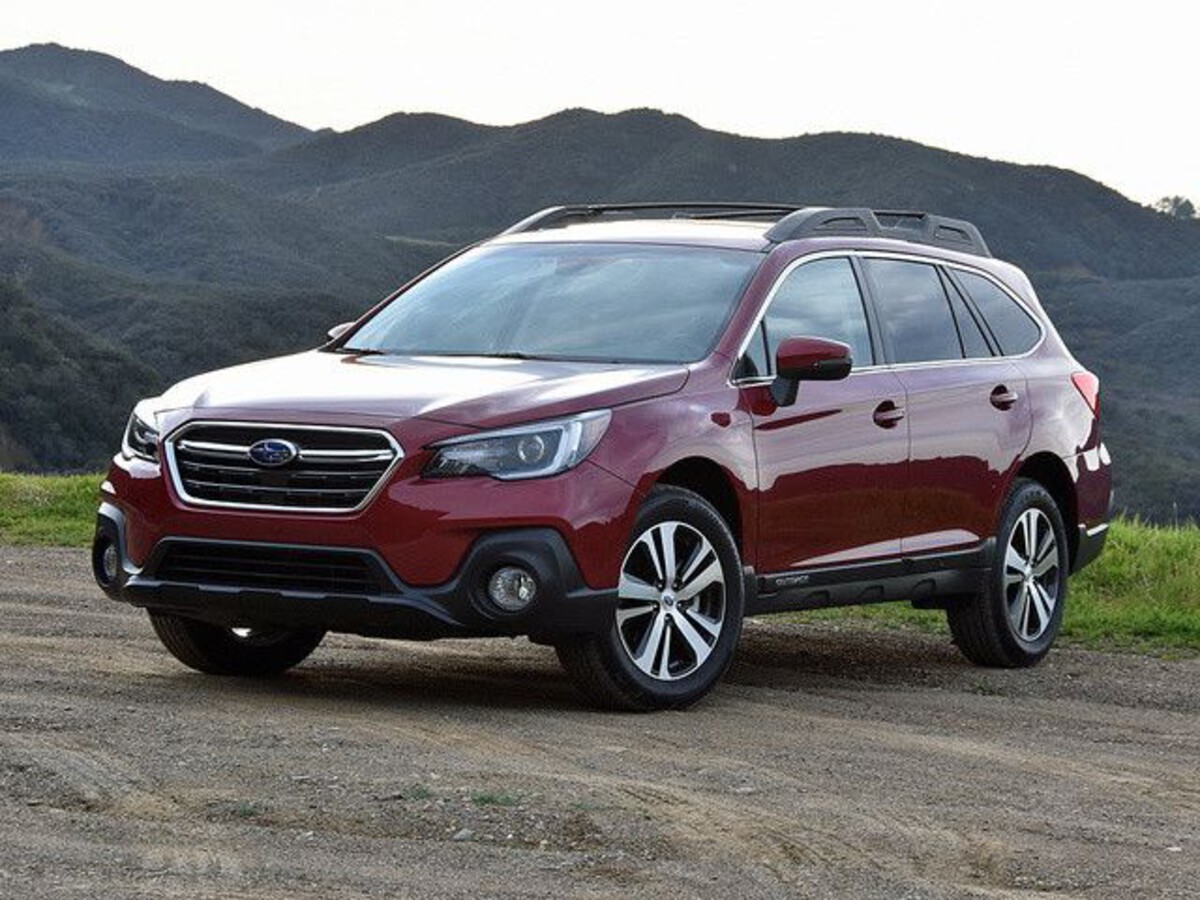
Subaru’s partnership with insurance companies has resulted in certified anti-theft programs that provide additional benefits beyond standard coverage.
These programs often include features such as guaranteed replacement cost coverage, which ensures that theft victims receive enough compensation to purchase a comparable replacement vehicle regardless of depreciation.
Some insurers also offer rental car coverage extensions and expedited claims processing specifically for Outback owners. The vehicle’s all-wheel-drive system contributes to its theft protection profile in unexpected ways.
The complexity of the AWD system makes the Outback less attractive for joyriding theft, as the vehicle requires more sophisticated knowledge to operate effectively.
Additionally, the AWD system’s integration with the vehicle’s security systems provides additional monitoring points that can detect unauthorized operation attempts. Subaru’s commitment to safety and security extends to regular software updates and security patches for the Outback’s electronic systems.
These ongoing improvements help maintain the vehicle’s theft resistance throughout its ownership period, and insurance companies often recognize this commitment by maintaining favorable policy terms even as vehicles age.
The Outback also benefits from Subaru’s comprehensive parts security program, which includes advanced tracking and serialization systems that make it difficult for stolen components to enter legitimate distribution channels.
This approach reduces the profitability of theft-for-parts operations, further contributing to the vehicle’s low theft profile and favorable insurance treatment.
4. Mazda CX-5 (2020-2023)
The Mazda CX-5 has emerged as a standout performer in theft insurance benefits, earning recognition from major insurance companies for its advanced security features and exceptionally low theft rates.
Mazda’s commitment to sophisticated anti-theft technology, combined with the CX-5’s unique market position, has resulted in some of the most favorable theft insurance terms available in the compact SUV segment.
Mazda’s i-ACTIVSENSE safety and security suite includes advanced theft prevention technologies that insurance companies highly value. The system’s integrated approach combines traditional security measures with innovative detection and response capabilities, creating multiple layers of protection that make unauthorized access extremely difficult.
The CX-5’s smart key system employs advanced encryption protocols that are virtually impossible to bypass using conventional theft methods. The vehicle’s theft statistics are among the best in its class, with many model years recording theft rates below 0.4 per 1,000 vehicles.
This exceptional performance stems from Mazda’s comprehensive approach to security, which includes not only advanced technology but also careful attention to physical security features such as reinforced door frames, tamper-resistant locks, and hidden security system components.
Insurance companies recognize the CX-5’s security excellence through specialized programs that offer enhanced coverage options and reduced premiums.
These programs often include benefits such as new car replacement coverage, which provides compensation based on the vehicle’s original purchase price rather than its depreciated value.
Many insurers also offer reduced deductibles specifically for CX-5 theft claims, recognizing the low risk profile associated with the vehicle. Mazda’s partnership with insurance providers has resulted in innovative coverage options that go beyond traditional theft protection.
Some programs include coverage for personal items stolen from the vehicle, rental car benefits that extend beyond standard periods, and expedited claims processing that can provide resolution within 48 hours of filing. These enhanced benefits reflect the insurance industry’s confidence in the CX-5’s security capabilities.
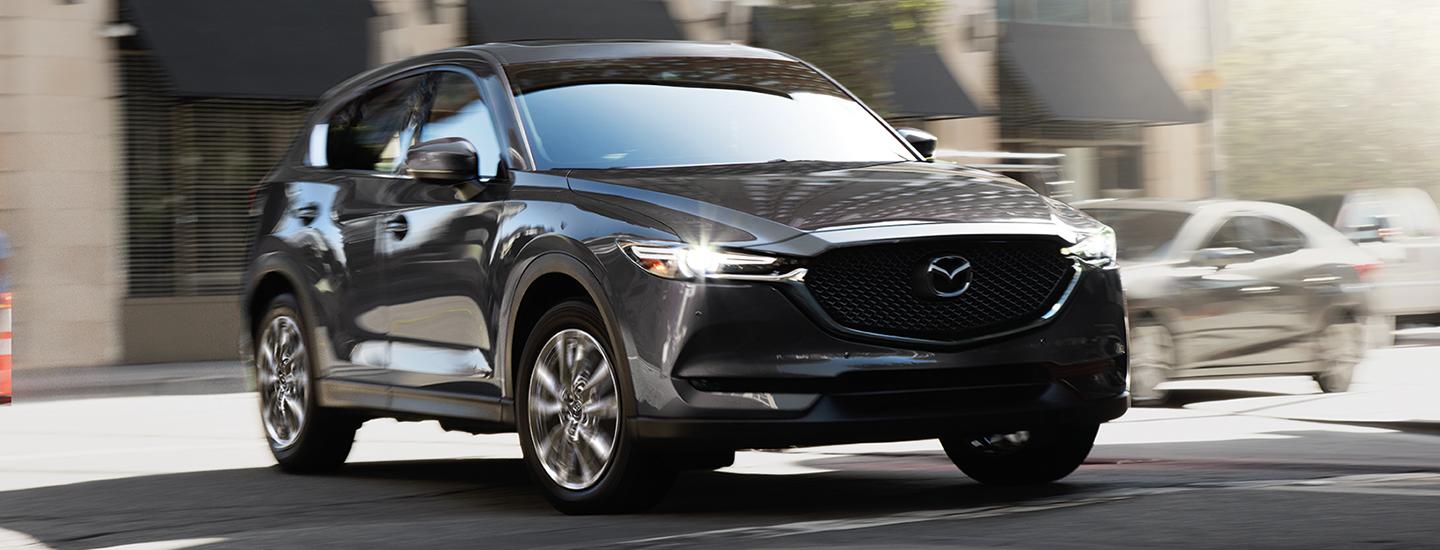
The CX-5’s connected vehicle technology contributes significantly to its theft insurance benefits. Mazda Connect includes tracking and monitoring capabilities that can provide real-time location data and vehicle status information to both owners and insurance companies.
This technology significantly improves recovery rates when theft does occur, leading to better insurance terms and coverage options. The vehicle’s design also contributes to its theft resistance.
Mazda has carefully positioned security system components to make them difficult to locate and disable, while the vehicle’s overall design minimizes obvious points of vulnerability.
The CX-5’s security system integration with the vehicle’s main computer systems means that disabling security features requires sophisticated knowledge and equipment that most opportunistic thieves don’t possess.
Mazda’s ongoing commitment to security improvements has resulted in regular system updates and enhancements that maintain the CX-5’s theft resistance over time.
Insurance companies recognize this commitment by maintaining favorable policy terms throughout the vehicle’s ownership period, ensuring that theft insurance benefits don’t diminish as the vehicle ages.
The CX-5 also benefits from Mazda’s comprehensive approach to parts security, which includes advanced serialization and tracking systems that make it difficult for stolen components to enter legitimate markets. This approach reduces the incentive for theft-to-order operations while making recovery of stolen parts more likely.
Also Read: 5 Cars With Encrypted Key Fobs and 5 That Broadcast Constantly
5. Volkswagen Passat (2016-2020)
The Volkswagen Passat represents a unique success story in theft insurance benefits, combining German engineering excellence with comprehensive security features that have earned recognition from insurance companies worldwide.
Despite being a European brand, the Passat has achieved some of the most favorable theft insurance terms available in the midsize sedan market, largely due to Volkswagen’s innovative approach to vehicle security and anti-theft technology.
Volkswagen’s immobilizer system in the Passat employs sophisticated encryption technology that makes unauthorized starting virtually impossible.
The system uses rolling codes that change with each use, combined with proximity sensing that ensures the correct key fob is present inside the vehicle.
This multi-layered approach has resulted in extremely low theft rates for the Passat, with many insurance companies reporting rates below 0.6 per 1,000 vehicles for recent model years.
The Passat’s anti-theft alarm system represents one of the most comprehensive approaches available in its price range. The system includes motion detection, tilt sensing, interior monitoring, and glass breakage detection, all integrated into a central security computer that can differentiate between different types of unauthorized access attempts.
Insurance companies value this sophisticated approach, often offering reduced premiums and enhanced coverage options for Passat owners. Insurance benefits for the Passat extend beyond basic theft coverage to include specialized programs that recognize Volkswagen’s commitment to security.
These programs often feature benefits such as original parts guarantee coverage, which ensures that theft-related repairs use genuine Volkswagen components. Many insurers also offer extended rental car coverage and expedited claims processing specifically for Passat owners.
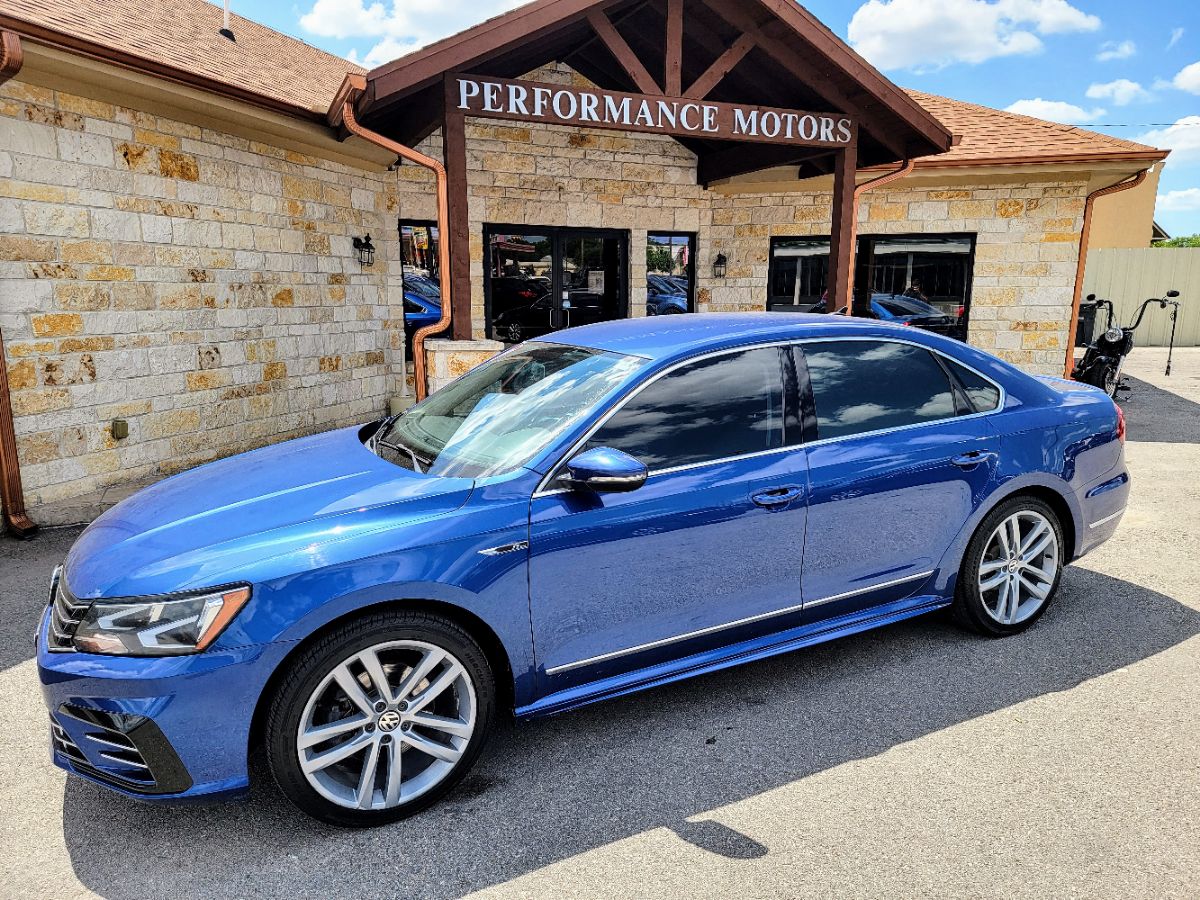
The vehicle’s European heritage contributes to its favorable insurance treatment in unexpected ways. European security standards are generally more stringent than those required in other markets, meaning that the Passat often exceeds minimum security requirements by significant margins.
Insurance companies recognize this additional security margin by offering better terms and more comprehensive coverage options. Volkswagen’s partnership with major insurance providers has resulted in certified anti-theft programs that provide additional benefits beyond standard policies.
These programs often include features such as agreed value coverage, which establishes the vehicle’s value at the time of policy inception rather than relying on market depreciation calculations.
Some insurers also offer gap coverage that protects against the difference between insurance payouts and remaining loan balances. The Passat’s sophisticated electronic systems contribute to both theft prevention and recovery capabilities.
The vehicle’s onboard diagnostics can provide detailed information about unauthorized access attempts, while integrated GPS capabilities can assist in recovery efforts when theft does occur.
Insurance companies factor these recovery advantages into their coverage calculations, often resulting in better terms for policy holders. Volkswagen’s commitment to ongoing security improvements has resulted in regular software updates and system enhancements that maintain the Passat’s theft resistance throughout its ownership period.
Many insurance companies recognize this commitment by maintaining favorable policy terms even as vehicles age, ensuring that theft insurance benefits don’t diminish over time.
The Passat also benefits from Volkswagen’s comprehensive approach to parts security, which includes advanced tracking and authentication systems that make it difficult for stolen components to enter legitimate distribution channels.
This anti-fencing approach reduces the profitability of Passat theft for parts, contributing to the vehicle’s low theft risk profile and favorable insurance treatment.
5 Cars That Don’t Qualify for Theft Insurance Benefits
These conventional used vehicles lack the advanced security features necessary to qualify for anti-theft insurance discounts or premium theft coverage benefits, leaving their owners paying full insurance rates without additional protection advantages.
Their basic or non-existent security systems fail to meet insurance company requirements for theft prevention discounts, forcing owners to bear higher comprehensive coverage costs while receiving standard theft protection.
Theft of a vehicle is only covered if you carry comprehensive insurance. Comprehensive coverage is optional for vehicles that have been paid off but it is required for leased and financed vehicles. Without qualifying security features, these vehicles receive no premium reductions.
The absence of recognized anti-theft devices means these vehicles represent higher risk profiles to insurance companies, resulting in elevated premium costs and reduced coverage benefits compared to security-equipped alternatives.
Without proper anti-theft systems, owners face the possibility that insurance companies may impose coverage limitations or require additional security measures before providing optimal theft protection, making these vehicles financially disadvantageous choices for budget-conscious buyers seeking comprehensive security coverage.
1. Honda Civic (2016-2021)
The Honda Civic, despite its reputation as a reliable and popular vehicle, faces significant challenges when it comes to theft insurance benefits due to its consistently high theft rates and appeal to car thieves.
Insurance companies typically classify the Civic as a high-risk vehicle for theft coverage, resulting in elevated premiums, higher deductibles, and limited access to specialized anti-theft programs that are available for other vehicles.
The Civic’s theft vulnerability stems from multiple factors that make it particularly attractive to criminals. Its widespread popularity means that there’s a robust black market for Civic parts, making the vehicle valuable for both joyriding and parts harvesting operations.
The vehicle’s relatively simple security systems in older model years, combined with well-documented bypass methods available online, have made it a preferred target for both amateur and professional thieves.
Statistical data consistently shows the Civic among the most stolen vehicles in its class, with some model years recording theft rates exceeding 4.0 per 1,000 vehicles.
This high theft rate directly impacts insurance coverage, with most companies imposing higher premiums specifically for comprehensive coverage.
Many insurers require additional anti-theft devices or aftermarket security systems before offering standard coverage terms, adding to the overall cost of ownership. The Civic’s appeal to younger drivers also contributes to its unfavorable insurance profile.
Insurance companies have identified patterns showing that Civics are more likely to be stolen from high-risk locations and during high-risk times, partly due to the demographic patterns of ownership. This risk profile assessment leads to more restrictive coverage terms and higher deductibles for theft-related claims.
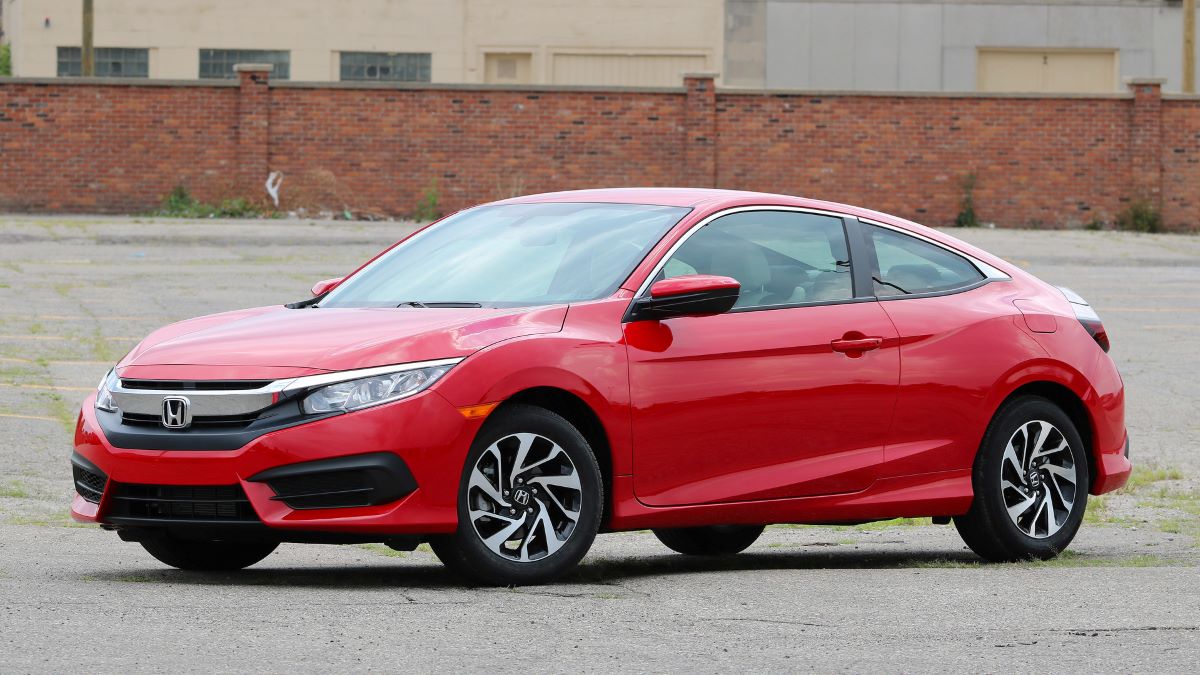
Honda’s factory anti-theft systems in the Civic, while present, are often considered less sophisticated than those found in other Honda models. The immobilizer system, while effective against casual theft attempts, has been compromised in many documented cases, leading insurance companies to view it as insufficient for comprehensive theft protection.
This perception results in fewer automatic discounts and reduced access to preferred coverage programs. The aftermarket modification culture surrounding the Civic also impacts its theft insurance profile negatively.
Modified Civics are often targeted for specific performance parts, and insurance companies typically view modification as increasing theft risk. Even stock Civics suffer from this association, as thieves often cannot distinguish between modified and unmodified vehicles from a distance.
Insurance companies have documented higher claim frequencies for Civic theft, not just in terms of complete vehicle theft but also for vandalism and parts theft.
This elevated claim pattern results in higher overall risk assessments that affect all aspects of coverage, including higher premiums, increased deductibles, and more restrictive policy terms.
The Civic’s parts market dynamics also work against favorable insurance treatment. The high demand for Civic parts in both legitimate and illegitimate markets means that even unsuccessful theft attempts often result in significant damage as thieves target valuable components.
Insurance companies factor these partial loss scenarios into their risk calculations, further elevating the cost of coverage. Many insurance companies require additional verification and documentation for Civic policies, including more frequent vehicle inspections and stricter requirements for security device installation.
These additional requirements reflect the industry’s recognition of the elevated theft risk associated with the model and can make obtaining comprehensive coverage more complicated and expensive.
2. Ford F-150 (2015-2020)
The Ford F-150, America’s best-selling pickup truck, faces significant challenges in qualifying for favorable theft insurance benefits due to its extremely high theft rates and the substantial value of its components in the black market.
Insurance companies consistently rank the F-150 among the highest-risk vehicles for theft coverage, resulting in elevated premiums, restrictive policy terms, and limited access to specialized anti-theft programs.
The F-150’s theft vulnerability is multifaceted, stemming from its popularity, high resale value, and the valuable nature of its components. Pickup trucks, particularly the F-150, are frequently targeted for both complete vehicle theft and parts harvesting operations.
The truck’s tailgate alone can be worth thousands of dollars on the black market, while components like catalytic converters, wheels, and electronic modules command premium prices among thieves.
Statistical data reveals alarming theft rates for the F-150, with some model years recording rates exceeding 7.0 per 1,000 vehicles. This exceptionally high theft rate directly translates into unfavorable insurance treatment, with most companies imposing significant premium increases for comprehensive coverage.
Many insurers require additional security measures or refuse to offer certain coverage options without aftermarket anti-theft installations. The F-150’s appeal to commercial users and contractors creates additional theft risk factors that insurance companies carefully consider.
Work trucks are often left unattended in high-risk locations, loaded with valuable tools and equipment that increase their attractiveness to thieves. Even personal-use F-150s suffer from this risk association, as thieves cannot easily distinguish between work and personal vehicles.
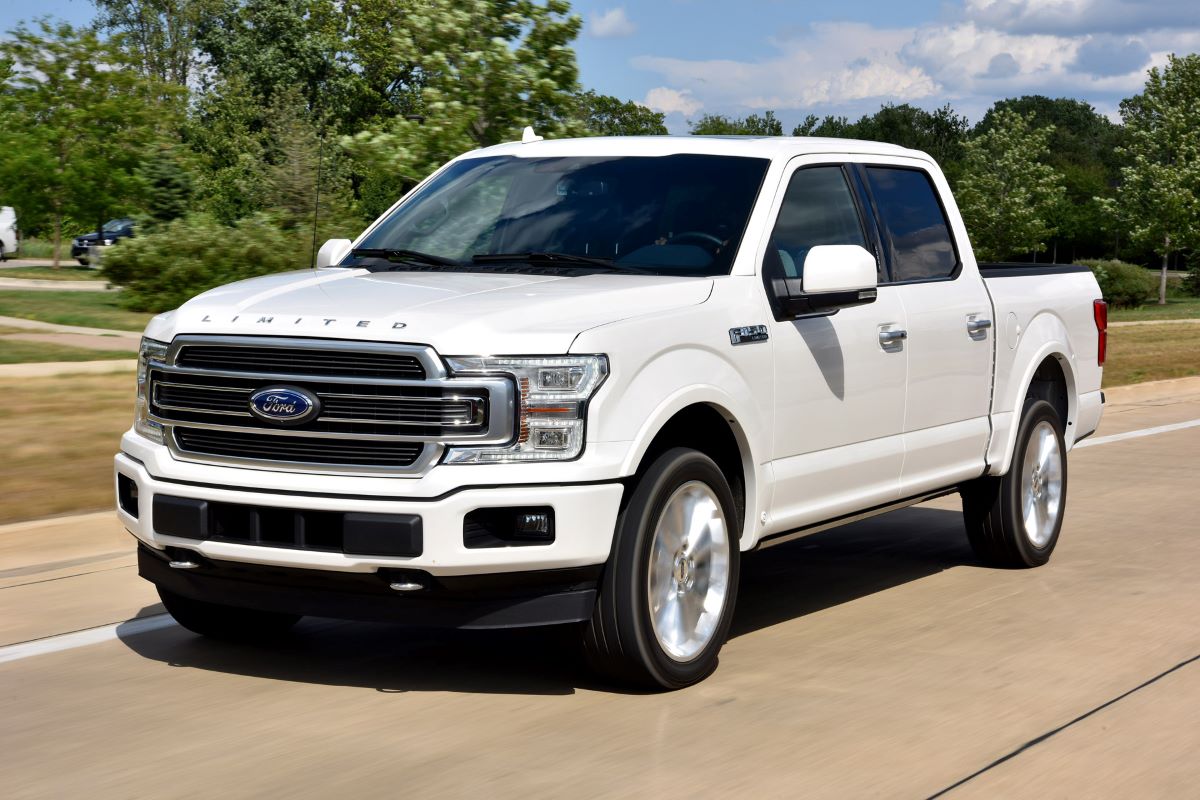
Ford’s factory security systems in the F-150, while present, are often overwhelmed by the sheer volume of theft attempts and the sophisticated methods employed by professional truck thieves.
The vehicle’s size and accessibility make it easier for thieves to access security system components, and well-documented bypass methods are readily available through online sources.
The F-150’s role in organized crime operations significantly impacts its insurance profile. Law enforcement agencies have identified the F-150 as a preferred vehicle for various criminal activities, from drug trafficking to equipment theft, making it a target for both opportunistic and organized criminal enterprises.
Insurance companies factor this criminal association into their risk assessments, resulting in more restrictive coverage terms. International export demand for F-150s and their components creates additional theft pressure that insurance companies must consider.
The truck’s popularity in markets where it’s not officially sold drives sophisticated theft-to-export operations that specifically target newer F-150 models. This international demand maintains high theft rates even as domestic security measures improve.
The F-150’s parts market dynamics work strongly against favorable insurance treatment. The high interchangeability of parts between model years and the robust demand for used F-150 components create ideal conditions for theft-for-parts operations.
Insurance companies document high frequencies of partial theft claims, where valuable components are stripped while the vehicle remains recoverable.
Many insurance companies impose additional requirements for F-150 coverage, including mandatory GPS tracking systems, enhanced alarm requirements, and restrictions on coverage for vehicles parked in certain high-risk areas.
These requirements reflect the industry’s recognition that standard security measures are insufficient for effective F-150 theft prevention. The commercial use potential of the F-150, even when used personally, affects insurance risk calculations.
Insurers recognize that pickup trucks are more likely to be used for activities that increase theft exposure, such as hauling valuable equipment or traveling to high-risk locations, resulting in higher risk assessments across all F-150 policies.
3. Chevrolet Malibu (2016-2020)
The Chevrolet Malibu faces significant challenges in qualifying for favorable theft insurance benefits, primarily due to documented security vulnerabilities and higher-than-average theft rates that have earned it unfavorable recognition from insurance companies.
Despite General Motors’ efforts to improve security features, the Malibu continues to struggle with theft-related issues that directly impact insurance coverage terms and costs.
The Malibu’s theft vulnerability stems from several interconnected factors that make it particularly susceptible to various types of criminal activity.
The vehicle’s keyless entry and push-button start systems, while convenient, have been compromised through relay attacks and signal amplification techniques that are readily available to criminals.
These electronic vulnerabilities have been well-documented by security researchers and exploited by thieves, leading to elevated theft rates. Insurance companies report theft rates for the Malibu that consistently exceed industry averages for midsize sedans, with some model years recording rates above 3.5 per 1,000 vehicles.
This elevated theft rate directly impacts insurance coverage, with most companies imposing higher premiums for comprehensive coverage and requiring additional security measures before offering standard policy terms.
General Motors’ factory anti-theft systems in the Malibu, while meeting minimum industry standards, have proven insufficient against increasingly sophisticated theft methods.
The vehicle’s immobilizer system has been bypassed in documented cases, and the alarm system’s effectiveness is often compromised by the same vulnerabilities that affect the keyless entry system. Insurance companies view these security shortcomings as requiring additional risk mitigation measures.
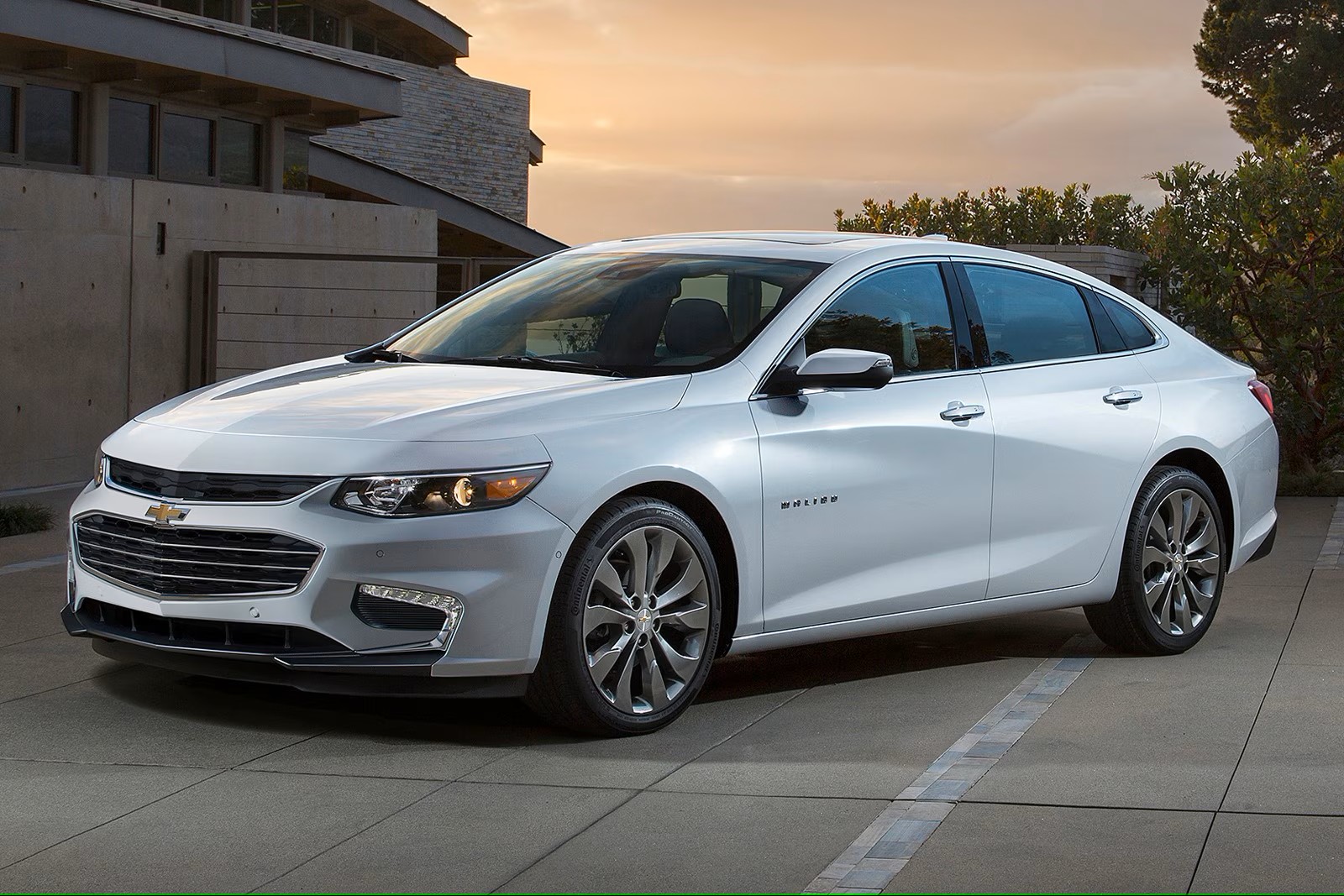
The Malibu’s position in the used car market contributes to its theft appeal, as it offers a good balance of value and accessibility for criminals. The vehicle’s moderate price point makes it attractive for both joyriding and resale operations, while its common appearance allows it to blend in easily, reducing the likelihood of detection after theft.
Parts theft represents a significant concern for Malibu owners, with criminals frequently targeting valuable components such as airbags, electronic control modules, and catalytic converters.
The high demand for these parts in both legitimate and illegitimate markets creates ongoing theft pressure that insurance companies factor into their risk assessments, resulting in higher comprehensive coverage costs.
The Malibu’s electronic system vulnerabilities extend beyond basic theft concerns to include issues with key fob cloning and unauthorized access to vehicle systems.
These security weaknesses have been documented by automotive security researchers and exploited by criminals, leading insurance companies to view the vehicle as requiring enhanced security measures for adequate protection.
Insurance companies often require additional verification procedures for Malibu policies, including more frequent vehicle inspections and stricter documentation requirements for security device installation.
These additional requirements reflect the industry’s recognition that standard security measures may be insufficient for effective theft protection. The vehicle’s demographic patterns also influence its insurance profile, as Malibus are often purchased by first-time car buyers or budget-conscious consumers who may be less likely to invest in additional security measures.
This ownership pattern creates elevated risk scenarios that insurance companies factor into their coverage calculations. Many insurers impose restrictions on Malibu coverage, including higher deductibles for theft-related claims, reduced coverage for certain types of partial theft, and requirements for aftermarket security system installation.
These restrictions reflect the industry’s assessment that the vehicle’s factory security measures are insufficient for comprehensive theft protection. The Malibu’s association with rental car fleets also impacts its theft insurance profile negatively.
Rental vehicles are often targeted by criminals due to their predictable locations and limited security measures, and even privately-owned Malibus suffer from this association as thieves cannot easily distinguish between rental and private vehicles.
4. Hyundai Elantra (2017-2021)
The Hyundai Elantra has gained unfortunate notoriety in the insurance industry due to significant security vulnerabilities that have made it extremely susceptible to theft, resulting in some of the most restrictive theft insurance terms available in the compact sedan market.
The vehicle’s security issues have been so pronounced that many insurance companies have imposed special requirements or refuse certain coverage options entirely.
The Elantra’s theft problem stems primarily from a critical security flaw: many models lack engine immobilizers, making them vulnerable to theft using simple techniques that have been widely publicized on social media platforms.
This vulnerability has led to a dramatic spike in Elantra thefts, with some regions reporting increases of over 1000% in theft rates for affected model years.
The absence of immobilizer technology in many Elantra models represents a significant security gap that insurance companies view as unacceptable in modern vehicles.
While immobilizers have been standard equipment on most vehicles for decades, Hyundai’s decision to make them optional or omit them entirely on certain trim levels has created a massive vulnerability that criminals have been quick to exploit. Statistical data shows alarming theft rates for the Elantra, with some model years and regions recording rates exceeding 10.0 per 1,000 vehicles.
This extraordinary theft rate has prompted many insurance companies to impose severe restrictions on Elantra coverage, including mandatory aftermarket security system installation, significantly higher deductibles, and in some cases, refusal to provide comprehensive coverage altogether.
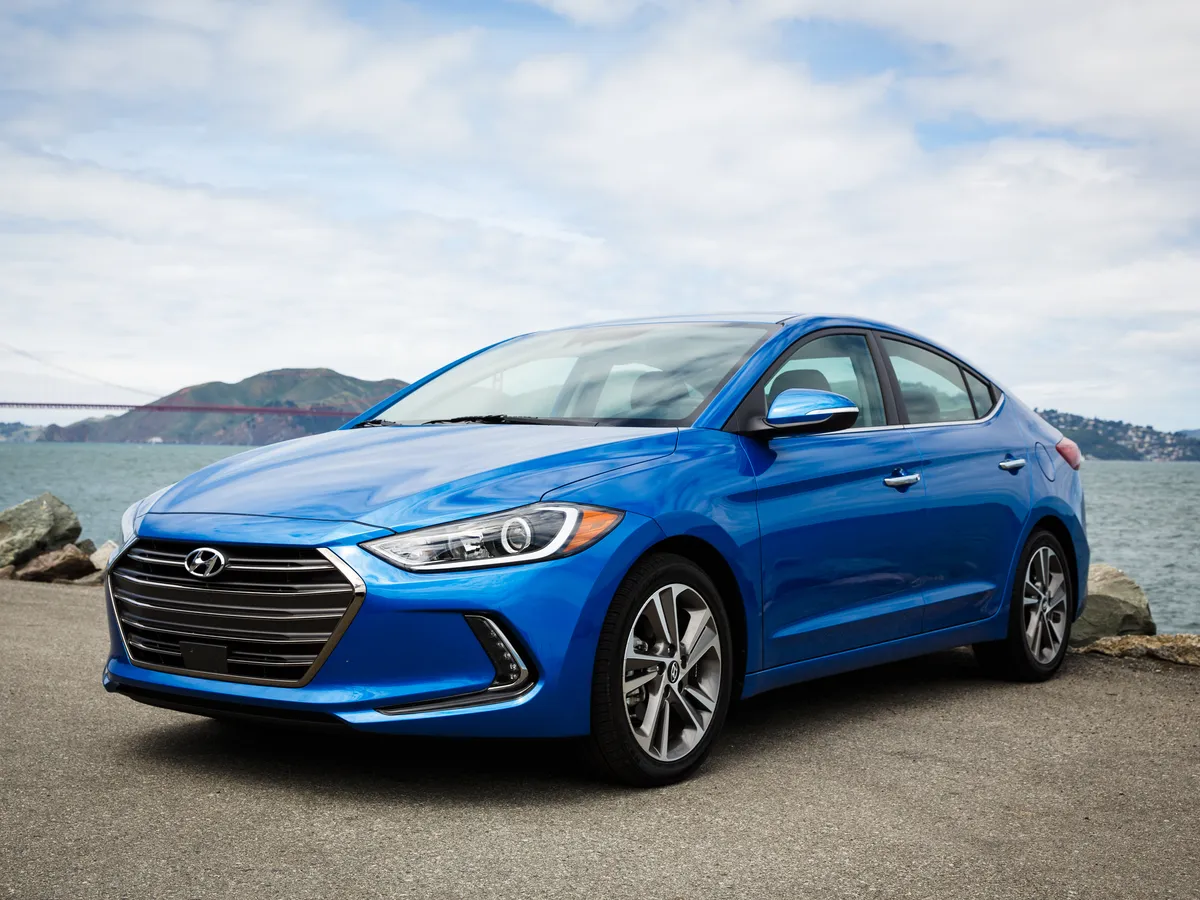
The Elantra’s theft method has become so simple and widely known that it has spawned viral social media trends showing how easily these vehicles can be stolen.
The technique requires only basic tools and minimal skill, making it accessible to opportunistic criminals who might not otherwise attempt vehicle theft. This ease of theft has created a self-perpetuating cycle where increased publicity leads to more theft attempts.
Insurance companies have documented that Elantra thefts often involve joyriding and vehicle abandonment, resulting in significant damage even when the vehicle is ultimately recovered.
This pattern of theft-related damage increases the overall cost of claims and contributes to the unfavorable insurance treatment these vehicles receive.
The legal implications of the Elantra’s security vulnerabilities have also affected insurance coverage. Multiple class-action lawsuits have been filed against Hyundai regarding the security issues, and some insurance companies have expressed concerns about potential liability exposure related to the known vulnerabilities.
Hyundai’s response to the security crisis, while including software updates and anti-theft kits for some vehicles, has been viewed by many insurance companies as insufficient given the scale of the problem.
The company’s initial reluctance to acknowledge the severity of the issue and the limited scope of proposed solutions have contributed to continued unfavorable insurance treatment.
The Elantra’s theft crisis has created ripple effects throughout the Hyundai lineup, with insurance companies applying elevated scrutiny to other Hyundai models that may share similar vulnerabilities.
This broader impact has affected the brand’s overall insurance standing and contributed to more restrictive coverage terms across multiple model lines.
Many insurance companies now require extensive documentation and verification for Elantra policies, including proof of aftermarket anti-theft system installation, regular vehicle inspections, and restrictions on where the vehicle can be parked overnight.
These requirements reflect the industry’s assessment that the vehicle’s factory security is fundamentally inadequate. The ongoing nature of the Elantra’s security crisis means that insurance companies continue to adjust their policies and requirements as new information becomes available.
This dynamic situation has created uncertainty for both insurers and vehicle owners, contributing to the continued unfavorable treatment these vehicles receive in the insurance market.
5. Kia Forte (2018-2022)
The Kia Forte has joined the ranks of vehicles facing severe theft insurance challenges due to security vulnerabilities similar to those affecting other Kia and Hyundai models.
The Forte’s theft insurance problems stem from the same fundamental security flaws that have plagued multiple models in the Kia lineup, resulting in dramatic increases in theft rates and correspondingly restrictive insurance coverage terms.
Like its corporate sibling the Hyundai Elantra, many Kia Forte models lack proper immobilizer systems, making them vulnerable to theft techniques that require only basic tools and minimal skill.
This security gap has been extensively documented and publicized, leading to a surge in Forte thefts that has caught the attention of insurance companies and law enforcement agencies nationwide.
The Forte’s theft vulnerability became widely known through viral social media content that demonstrated how easily these vehicles could be stolen.
The technique’s simplicity and the widespread availability of instructional content have made the Forte a preferred target for opportunistic thieves, resulting in theft rates that far exceed industry norms for compact sedans.
Insurance companies report dramatic increases in Forte theft claims, with some regions experiencing theft rate increases of over 800% for affected model years.
This extraordinary increase has prompted many insurers to impose severe restrictions on Forte coverage, including mandatory aftermarket security system requirements, significantly elevated deductibles, and in some cases, complete refusal to provide comprehensive theft coverage.
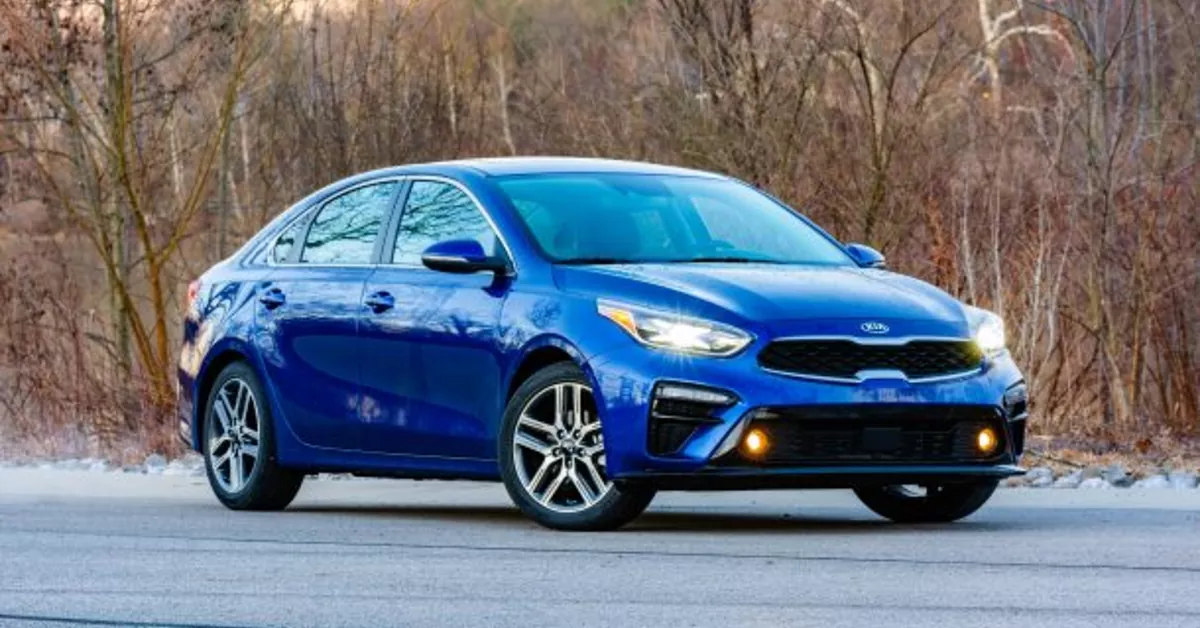
The pattern of Forte thefts often involves joyriding by inexperienced criminals, resulting in high rates of vehicle damage even when the cars are ultimately recovered.
Insurance companies have documented that recovered Fortes frequently require extensive repairs due to collision damage, interior destruction, and mechanical abuse, significantly increasing the cost of theft-related claims.
Kia’s corporate response to the security crisis has been viewed by many insurance companies as inadequate given the scope of the problem. While the company has offered software updates and anti-theft kits for some vehicles, the limited availability and effectiveness of these solutions have not significantly improved the Forte’s insurance standing.
The Forte’s theft crisis has been compounded by its popularity among younger drivers, a demographic that often parks in higher-risk locations and may be less likely to invest in additional security measures.
This demographic factor, combined with the vehicle’s inherent security vulnerabilities, creates a particularly challenging risk profile for insurance companies.
Legal challenges related to Forte’s security issues have also affected insurance coverage availability and terms. Multiple lawsuits have been filed against Kia regarding the security vulnerabilities, and some insurance companies have expressed concerns about potential liability exposure related to covering vehicles with known, unfixed security flaws.
The international scope of Forte’s security problems has created additional complications for insurance coverage. The same vulnerabilities that affect domestic vehicles also impact exported models, contributing to organized theft operations that specifically target Kia vehicles for international resale markets.
Many insurance companies now require extensive additional documentation for Forte policies, including proof of aftermarket anti-theft system installation, verification of parking arrangements, and agreement to regular vehicle inspections.
These requirements reflect the industry’s assessment that the vehicle’s factory security measures are fundamentally inadequate for theft protection.
The ongoing nature of the Forte’s security crisis means that insurance companies continue to monitor the situation and adjust their policies accordingly.
This dynamic environment has created uncertainty for both insurers and vehicle owners, with many companies taking increasingly conservative approaches to Forte coverage as new security vulnerabilities are discovered and exploited.
Also Read: 5 Cars With Remote Kill Features and 5 That Keep Running After Theft

